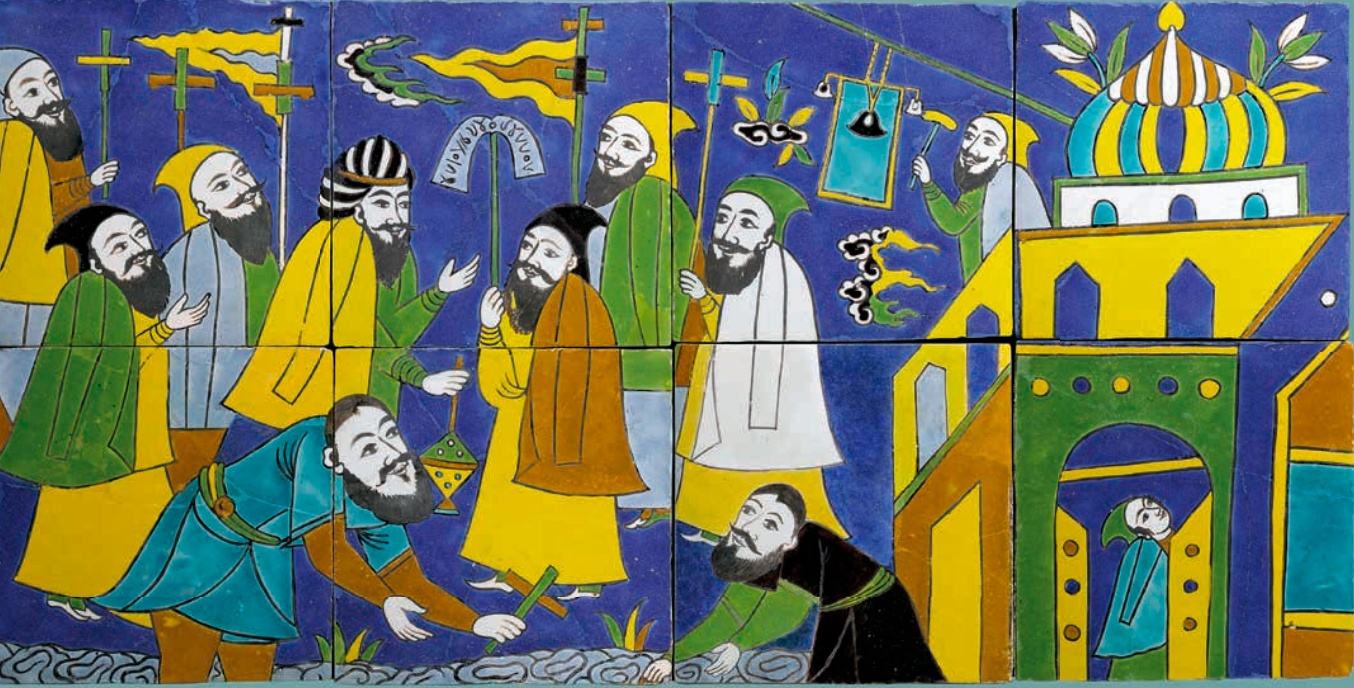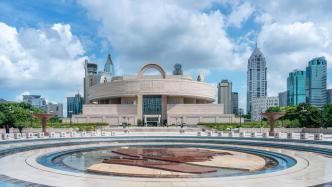
Starting from October 9, 2023, the Shanghai Museum People's Square Branch will be closed for exhibition hall adjustments. It is expected that after renovation and upgrade, some exhibition halls will be reopened before the end of 2023. Shanghai Museum stated that this temporary separation is also necessary for the relocation of cultural relics and the exhibition arrangement in the East Hall of the Shanghai Museum.
The Paper has learned that, apart from being forced to close during the epidemic, this is the first time the Shanghai Museum’s People’s Square has been closed for a long time since it opened in 1996. Shanghai Bo East Pavilion is still undergoing intensive adjustments and exhibition arrangements. The permanent exhibition online exhibition hall of the Shanghai Museum People's Square will continue to be open to the audience: visitors can visit the official website of the Shanghai Museum via PC or mobile at any time and anywhere, and enjoy online browsing of the museum's classic exhibition created more than 20 years ago. It will "never end" online.

At 11 a.m. on October 9, 2023, the temporary farewell announcement in front of the Shanghai Museum was photographed by The Paper reporter Lu Linhan
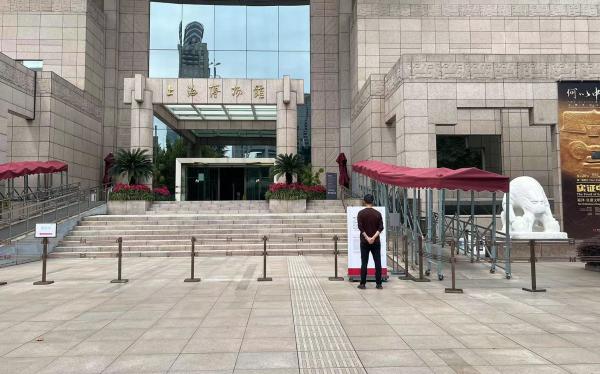
11 a.m. on October 9, 2023, in front of the south gate of Shanghai Museum Photography by The Paper reporter Lu Linhan

The East Building of the Shanghai Museum in Pudong is undergoing adjustments and exhibition installations.
On the morning of October 9th, The Paper was in front of the south gate of the Shanghai Museum in People’s Square. The exhibition posters on both sides were still there, and the white marble animal sculptures were still standing. The huge square was deserted, and the original grand scene of queuing up to watch the exhibition had long since disappeared. Again, only one or two viewers read quietly before the farewell announcement. In fact, as early as more than a month ago (September 4, 2023), the Ancient Chinese Bronze Hall, Ancient Chinese Sculpture Hall, Ancient Chinese Ceramics Hall, Chinese Seal Hall, Ancient Chinese Jade Hall, and China The Currency Hall of the past dynasties has been closed for adjustment. On the evening of October 8, with the Chinese Calligraphy Museum of the Past Dynasties, the Chinese Painting Museum of the Past Dynasties, the Chinese Furniture Museum of the Ming and Qing Dynasties, the Chinese Ethnic Minority Crafts Museum, "Empirical China - Special Exhibition of Songze·Liangzhu Civilization Archeology" and "Walking with the Times" - With the closing of the special exhibition “Inscriptions and Stone Art”, the door of Shanghai Museum’s People’s Square Hall is temporarily closed and will be re-opened at the end of the year.
"Although it is a bit regretful, the temporary closure is for the betterment of Shanghai Museum. I am very much looking forward to the reopening of the People's Square and East Buildings of the Shanghai Museum!" Ms. Li, a citizen, told The Paper.
A Mr. Shen who passed by the Shanghai Expo on a business trip from Hubei said that he must visit the Shanghai Museum every time he comes to Shanghai. “Because I like ancient Chinese art, I feel like I haven’t come to Shanghai unless I go to the Shanghai Expo. This is very unfortunate, but I understand it very much and I am very much looking forward to the re-appearance of Shanghai Bo at the end of this year. I will definitely come here specifically."

Shanghai Museum People’s Square Pavilion Information

Shanghai Museum People’s Square Pavilion “Ancient Chinese Ceramics Museum” The Paper News Materials
According to the Shanghai Museum, during the temporary absence, the Shanghai Museum will set up a message booth in front of the south square of the People's Square to warmly wait for every audience who cares and supports the development of the Shanghai Museum and listen to the voices and expectations of the audience.
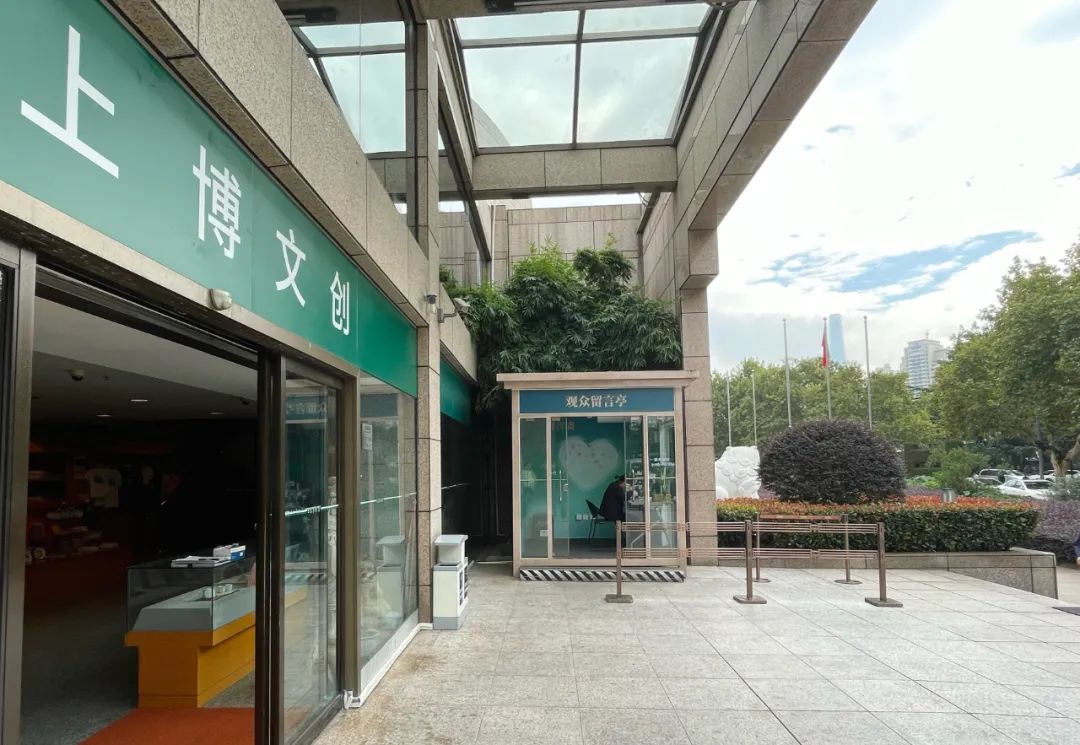
Message booth at the exit of Shanghai Museum Cultural and Creative Store
It is reported that the Shanghai Museum was officially opened on December 21, 1952, and its original location was the original racecourse building at No. 325 Nanjing West Road. In 1959, it moved into the former Zhonghui Bank Building at No. 16 Henan South Road. Beginning in 1972, he pioneered the trend of domestic museums and changed the comprehensive display to special displays such as Chinese bronzes, Chinese ceramics, and Chinese paintings, laying the basic model for the permanent display of the Shanghai Museum.

Shanghai Museum in the early 1950s
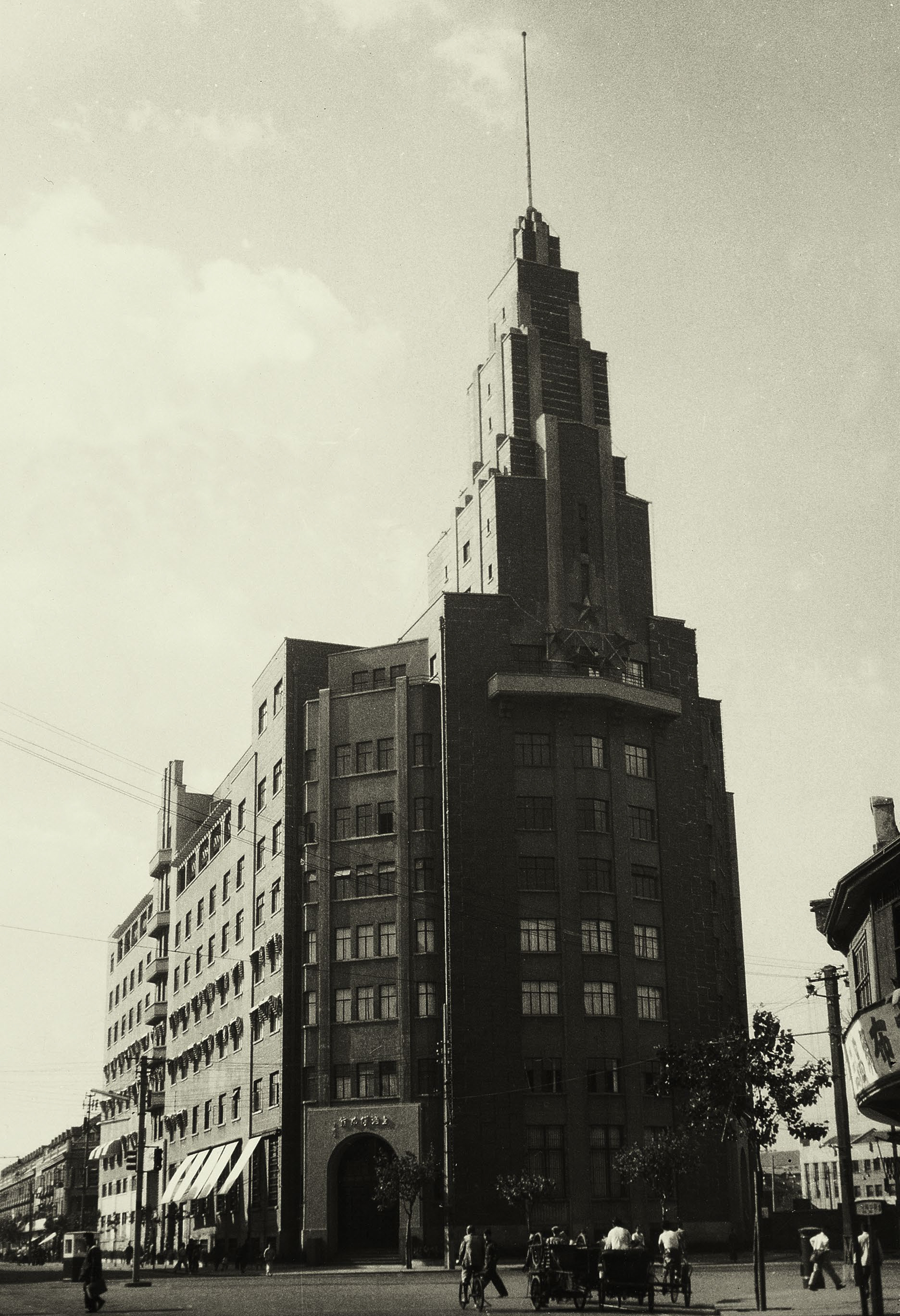
In 1959, it moved into the former Zhonghui Bank Building at No. 16 Henan South Road.
On October 12, 1996, the Shanghai Museum's People's Square Pavilion was fully completed and opened to the public. The permanent exhibitions in the People's Square Pavilion have the courage to explore and innovate in terms of artistic expression techniques, space creation, color atmosphere rendering, personalized design combinations of showcases, and lighting design concepts. The precious cultural relics and profound research are presented to every audience in the Shanghai Museum's display form and language. It is a classic and has been praised by colleagues in the industry. It enjoys a high reputation in the domestic and foreign museum circles.
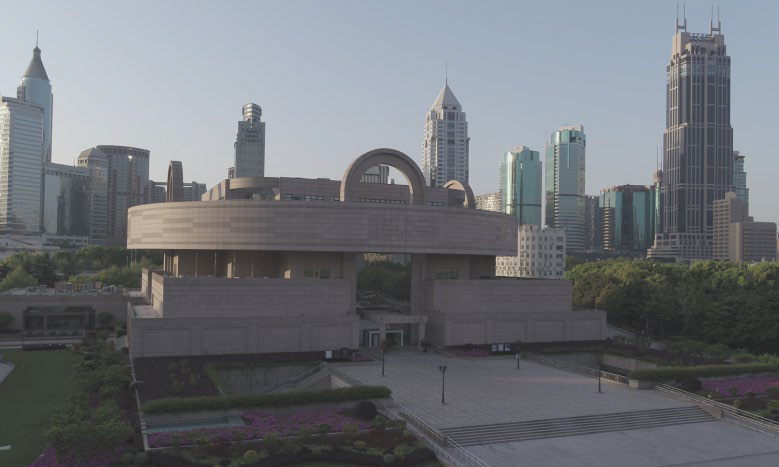
On October 12, 1996, the Shanghai Museum People's Square was fully completed and opened to the public.
The Shanghai Museum has nearly 1.02 million cultural relics in its collection, including more than 140,000 precious cultural relics. The collection of cultural relics includes 31 categories including bronze, ceramics, calligraphy and painting, sculpture, oracle bones, talismans, currency, jade, furniture, weaving and embroidery, lacquer ware, bamboo, wood and tooth horns, and ethnic minority cultural relics, among which bronze, ceramics, calligraphy and painting are the most prominent. The Shanghai People's Square Museum once had ten art exhibition halls, four cultural relic donation rooms and three special exhibition halls. It strives to reflect the complete development history of various art categories, the completeness of the system, the richness of the collection, and the exquisite quality. It enjoys high reputation at home and abroad.

Shanghai Museum Bronze Exhibition Hall.
In the 23 years since the Shanghai Museum People’s Square opened, a series of exhibitions or activities have been launched, which also carry the memories of generations of cultural and museum enthusiasts. Many children walked into the museum for the first time here; at the end of 2001, the "National Treasures Exhibition of Calligraphy and Paintings of Jin, Tang, Song and Yuan Dynasties" was exhibited here before the "Cultural Museum Craze" had yet arrived, which was a sensation in the city; in 2012 , the 60th anniversary of the founding of the Shanghai Museum, it once again held major exhibitions with academic height and social influence such as "Blue Spirit - Yuan Blue and White Exhibition", "Collection of Calligraphy and Ink - American Collection of Chinese Paintings and Calligraphy of the Five Dynasties, Song and Yuan Dynasties"; in recent years , "The British Museum's 100 Objects Exhibition" and "From Botticelli to Van Gogh: The National Gallery Collection Exhibition" are even more phenomenal exhibitions.

On the eve of the closing of "From Botticelli to Van Gogh - National Gallery Collection Exhibition", a winding queue was waiting in the lobby of Shanghai Expo to view the exhibition.
Behind every phenomenal exhibition is the quality assurance of “Produced by Shanghai Expo”
I especially remember that on the evening of May 7, until midnight, the Shanghai Museum was brightly lit and crowded. Shanghai Expo used a 24-hour "Art Carnival" event to bid the grandest farewell to "From Botticelli to Van Gogh - The National Gallery Collection Exhibition". This special exhibition, which lasted for 98 days, finally came to an end. curtain, which also set a new record for the number of visitors to a paid special exhibition in a Chinese museum: more than 420,000 people.
Looking back on the nearly 100 days since the opening of the exhibition, anyone passing by Bonan Plaza will always be attracted by the long queue at the door. In fact, queues at the door are almost the norm for SIBO special exhibitions. In a sense, it is also the public's affirmation of SIBO.
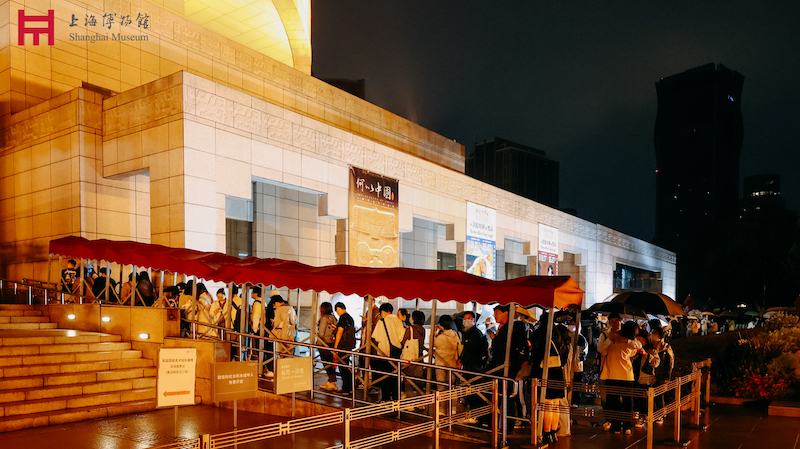
Audiences waiting to enter the South Square of Shanghai Museum The Paper
Looking back on the past exhibition history of Shanghai Expo, "Produced by Shanghai Expo" has always been synonymous with high quality. It is also the Shanghai Museum’s long-standing tradition to attach importance to international cooperation and exchanges, and many of them hold blockbuster Western art classic exhibitions. Since the opening of the new Shanghai Museum of Art in People's Square, it has cooperated with well-known art institutions in the United Kingdom, the United States, Spain, Italy, France, Japan, Russia and other countries to hold exhibitions. In the past ten years, Shanghai Expo has held sensational exhibitions, including the "Yuan Dynasty Blue and White Porcelain Exhibition" (2012), which was independently planned and brought together the collections of more than a dozen important art institutions around the world, and the "Dong Qichang Calligraphy and Painting Art Exhibition" ( 2018), there are also the "British Museum 100 Objects Exhibition" and "Blackstone Exit Cultural Relics Exhibition" introduced in cooperation with internationally renowned art institutions such as the British Museum and the Asian Civilizations Museum in Singapore.

On June 29, 2017, in front of the "British Museum 100 Objects Exhibition" exhibition hall on the second floor of the Shanghai Museum, the audience who had reached the end of the queue continued to wait patiently for the staff to let them enter the exhibition hall. Visual China Map
Western classics that have been exhibited include Van Gogh's "Wheat Field", Monet's "Water Lilies", Titian, Velázquez, Rubens, Van Dyck, Goya from the Prado Museum in Madrid, Spain, the United States 300 Years of Art, France under the Sun King, landscapes by Constable, Turner, and Millais at Tate Britain, and Edward Hopper's "The Night Walker" in "Eighty Years of American Art" The feeling of loneliness has also existed in the exhibition hall for a long time, which is evocative.

Shanghai Museum, "Eighty Years of American Art" exhibits Edward Hopper's "Nightwalker"
In terms of ancient Chinese art, at the end of 2001, the "National Treasures Exhibition of Calligraphy, Painting and Calligraphy of the Jin, Tang, Song and Yuan Dynasties" brought together precious cultural relics from the Palace Museum, Liaoning Provincial Museum and Shanghai Museum, setting a precedent for Tai-Kwun cooperation. Zhan Ziqian's "Spring Outing", Yan Liben's "Walking Chariot", Gu Hongzhong's "Han Xizai's Night Banquet", Zhang Zeduan's "Along the River During the Qingming Festival", Wang Xizhi's "Lanting Preface", Feng Chengsu's copy, Du Mu's "Zhang Hao Hao's Poems" and other famous works are all on it. Exhibited at Bo People's Square Pavilion. Among them, the most famous one, "Along the River During Qingming Festival," even had to queue for five or six hours alone.

At the end of 2001, the "National Treasures Exhibition of Calligraphy and Paintings of Jin, Tang, Song and Yuan Dynasties" was on display at the Shanghai Museum
Based on the success of the "National Treasure Exhibition", the Shanghai Museum later jointly organized the "Jin, Tang, Song and Yuan Calligraphy and Painting Exhibitions" with major museums in Japan and the United States. This was the first of its kind in China and has achieved great success. Big effect.

In 2012, the opening ceremony of the Shanghai Museum's "Collection of Calligraphy and Calligraphy - An Exhibition of Chinese Calligraphy and Painting Treasures from the Five Dynasties, Song and Yuan Dynasties collected by the United States" was held.
For example, in 2012, on the occasion of the 60th anniversary of the museum’s founding, the “Collection of Calligraphy and Calligraphy—An Exhibition of Chinese Paintings and Calligraphy from the Five Dynasties, Song and Yuan Dynasties collected in the United States” gathered representatives from the Metropolitan Museum of Art, the Boston Museum of Fine Arts, the Cleveland Museum of Art, and Nelson-Atkins Art. Ancient Chinese calligraphy and paintings collected by four museums; the "Special Exhibition of Blue and White Porcelain of the Yuan Dynasty" displays collections from Turkey, Iran, the United Kingdom, the United States, Japan, Russia and other countries, as well as domestic cultural and museum institutions and the Shanghai Museum of Art; in recent years, "Dong Qichang" The "Painting and Calligraphy Art Exhibition" also borrows collections from 15 important collection institutions at home and abroad, including the Palace Museum, the Metropolitan Museum of Art in the United States, and the Tokyo National Museum in Japan, based on the Shanghai Museum's collections. Each of the major exhibitions also demonstrated the academic strength and planning capabilities of Shanghai Expo, as well as the appeal of in-depth cooperation with world-class venues.
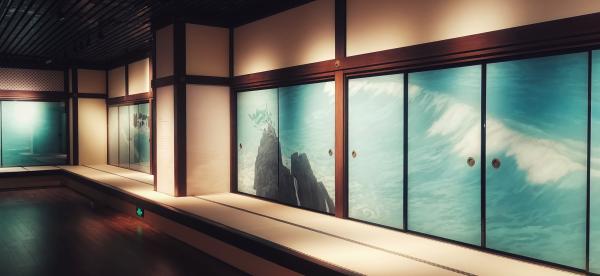
2019, "Rainbow over the Sea: Authentic Artifacts from Tangzhaoti Temple and Dongshan Kaiyi Partition Fan Painting Exhibition"
In recent years, the "Why China" cultural relics and archaeological exhibition series "Zhaizi China" and "Songze Liangzhu Civilization Archeology Exhibition" have been launched one after another, displaying the Shang Dynasty Fuhao Owl statue unearthed from Fuhao's tomb in Xiaotun, Anyang, Henan. A jade pendant in the shape of a person sitting in a posture, as well as cultural relics such as Liangzhu's "King Cong", "King Yue" and "Jade Scepter".
…
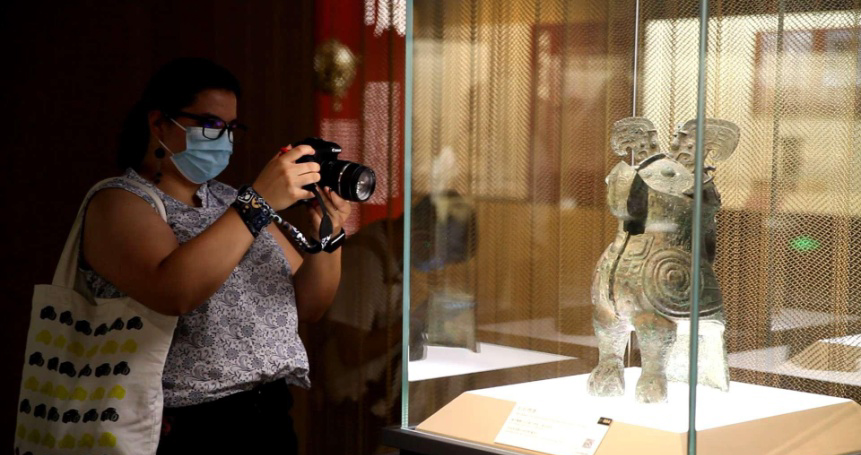
Shanghai Museum, "Why China" cultural relics and archaeological series exhibition
Each exhibition that has been repeatedly mentioned and recalled is a classic example of Shanghai Expo's curatorial capabilities and academic research "flying together" based on its own collection and academic capabilities.

"Light Reappears: Jingdezhen Porcelain Exhibition in the Mid-15th Century" exhibition scene
In the "never-ending" online exhibition hall, see the classic displays of Shanghai Expo
Although the offline exhibition hall is temporarily closed, the permanent exhibition online exhibition hall of the People's Square Pavilion will remain open. Visit the " Shanghai Museum Official Website " via PC or mobile at any time and anywhere, and you can enjoy online browsing. The museum's classic exhibitions created more than 20 years ago will "never end" online.

Panoramic exhibition hall of Chinese calligraphy through the ages

Ancient Chinese Bronze 3D Virtual Exhibition Hall
According to Shanghai Expo, there are a total of 10 permanent exhibition halls open online in Shanghai Expo Museum, which are divided into two categories: panoramic exhibition halls and three-dimensional virtual exhibition halls. Among them, six online exhibition halls, including Chinese calligraphy through the ages, Chinese paintings through the ages, Chinese minority crafts, ancient Chinese jades, Chinese Ming and Qing furniture, and Chinese currency through the ages, use panoramic technology to truly restore the full picture of the exhibition hall and details of the exhibits; ancient Chinese sculptures, ancient Chinese The four online exhibition halls, including Bronze, Ancient Chinese Ceramics and Chinese Seals of the Past Dynasties, use Web3D rendering technology to add interactive functions and enrich the audience experience.

Three-dimensional virtual exhibition hall of ancient Chinese sculptures
The Shanghai Museum has used panoramic technology in the online exhibition halls of special exhibitions in previous years, and used cameras to capture and restore the exhibition halls at a 1:1 ratio, with tens of millions of pixels, which not only presents the real exhibition hall environment to the audience, but also allows the audience to appreciate the high-definition Clear artifact exhibits.
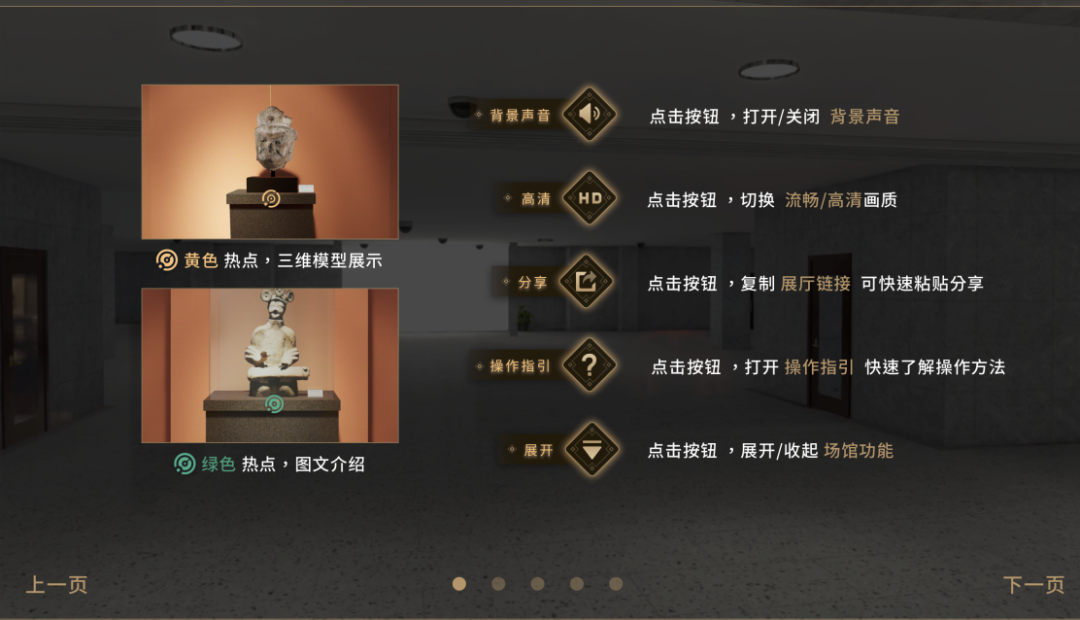
Shanghai Museum online exhibition hall.
In some online exhibition halls with permanent displays, the Shanghai Museum has tried Web3D rendering technology for the first time to present a three-dimensional virtual exhibition hall. This technology collects a huge amount of data on-site and makes post-production complex and cumbersome. Taking into account the Internet browsing habits of the audience, it is necessary to use the three-dimensional virtual exhibition hall To present the rich content of the exhibits without reducing the audience's online browsing experience, the huge data overlay in the production process has been lightweighted, and the user operation methods have been repeatedly polished and optimized to enable browsing through the browser without downloading plug-ins. Enjoy the experience in the exhibition hall. Currently, this technology is rarely used in online exhibition halls of domestic museums. In the future, with the continuous enrichment of museum research results, images, videos and other resources, the content of the three-dimensional virtual exhibition hall can continue to "grow", and exhibits can also be replaced according to the actual display, which is not possible in the panoramic exhibition hall.

Shanghai Museum online exhibition hall.
According to reports, by 2025, the East Building of the Shanghai Museum, which focuses on building the most complete system of general history exhibitions of ancient Chinese art at home and abroad, will be completed and opened; the People's Square Pavilion, which will focus on special exhibitions; and the Yangtze River Estuary II The construction of the North Pavilion with the ancient ship as the core has started, and the development pattern of "three pavilions in one body, linkage throughout the city, clear characteristics, and mutual complementation" has been basically formed.
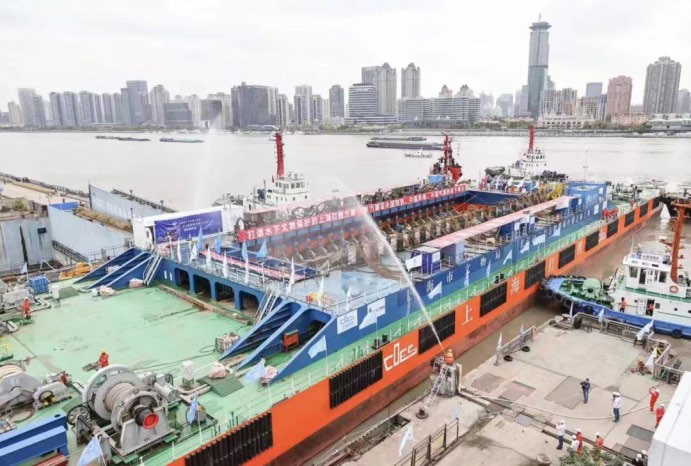
The former site of the Shanghai Shipyard will build a North Pavilion with the Yangtze Estuary No. 2 Ancient Ship as its core in the future.
